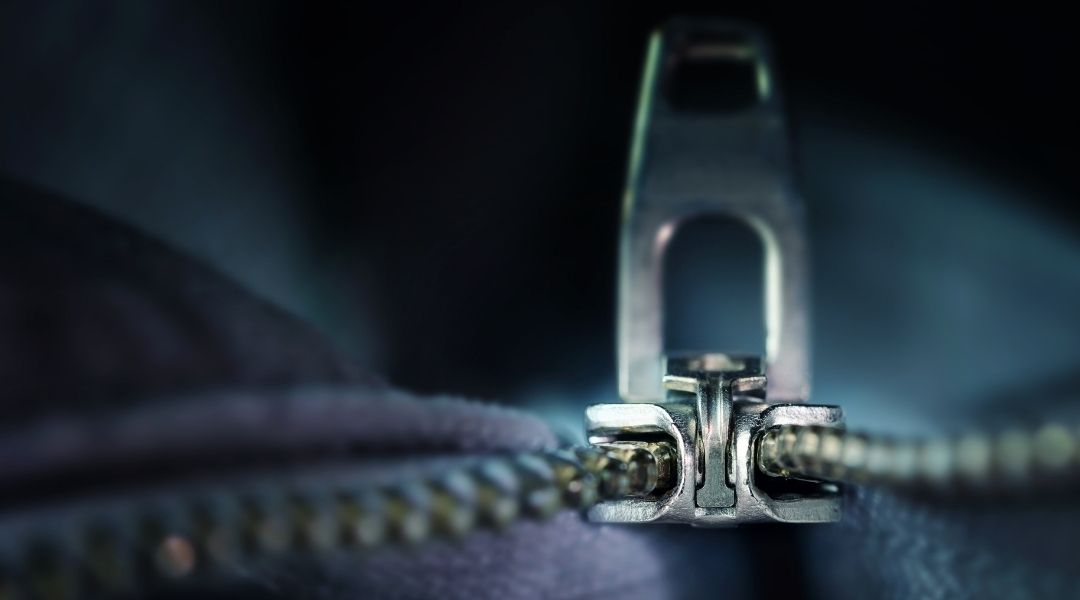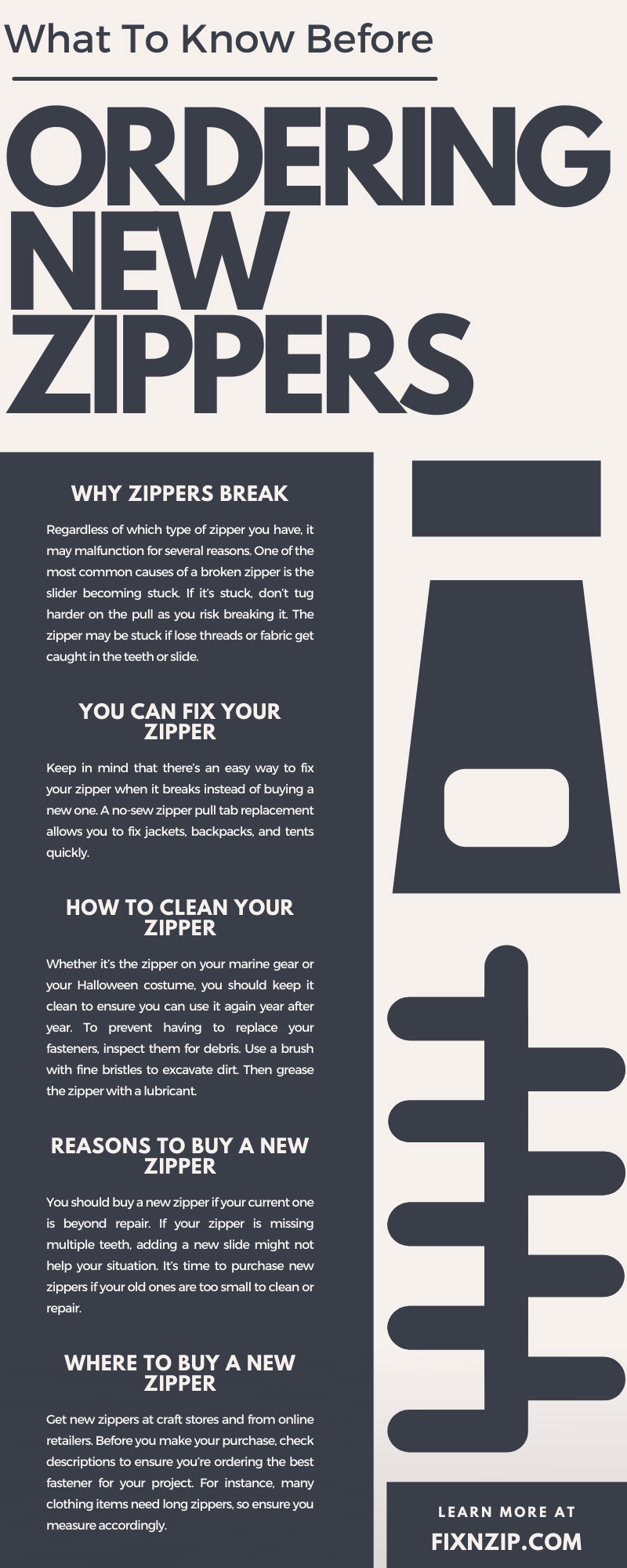
Creating your own fashion is a timeless hobby. Clothing is essential to our modern way of life, and the zipper has been part of it for more than 100 years. This simple fastener makes clothing easier to wear, but you can also use it as a fashion statement. What to know before ordering new zippers is the different sizes, materials, and functions they serve. Use this guide to figure out which one is right for your project.
Most people don’t think about the mechanics of zippers—they just use them. This expertly designed piece of engineering is crafted with custom pieces that must latch together perfectly, or the mechanism won’t work. The hook and hollow of coordinating teeth must match up to secure a strong hold. The fastener should only come undone when the slide separates the teeth.
Whether you’re inserting a new zipper or repairing one, it’s important to understand how zippers are made. Though they seem simple, this fastener that’s been in use for more than 100 years is composed of several parts, including:
Before you purchase a zipper, know your options. They come in many different sizes, materials, and colors. When choosing a zipper, consider your project. When sewing a new zipper into an item, try to match the size and material of the previous zipper. If your original zipper was weak, you might consider a stronger one.
Metal, coil, and VISLON are the most common types of zippers. VISLON are recognizable by the shape of their teeth, which are slightly triangular. Their advanced interlocking method is waterproof and ideal for marine gear. VISLON zippers may look like metal or another neutral color.
Coil zippers are flexible and made from plastic. They are the strongest type of fastener and work well on items that curve, such as backpacks, tents, and boots. With coil, a line of teeth is sewn into the tape to form the chain. They come in a myriad of colors.
On the other hand, the teeth of metal zippers are sewn separately into the tape. They are shiny and metallic. Metal zippers tend to be sturdy and tough enough for jackets, bags, and upholstery.
In addition to the material, another vital thing to understand before picking out a replacement zipper is that they come in different sizes. It’s essential to measure the width of the teeth to know the size of the fastener you’re replacing. You measure zippers in millimeters. The most common sizes are 5mm, 10mm, and 15mm.
Locking zippers contain a mechanism within the slider that holds it in place. It won’t separate unless you use the pull tab to glide the slide over the teeth. Non-locking zippers will move no matter what part of the zipper you pull on, including pulling the teeth apart.
Finished zippers are standard on jackets and include an insertion box and pin as well as top and bottom stops. These additional pieces prevent the slider from falling off the chain and allow the zipper to separate. Continuous zippers are sewn into bags and tents. They don’t come apart at the ends.
Regardless of which type of zipper you have, it may malfunction for several reasons. One of the most common causes of a broken zipper is the slider becoming stuck. If it’s stuck, don’t tug harder on the pull as you risk breaking it. The zipper may be stuck if lose threads or fabric get caught in the teeth or slide. Dirt and debris may also cause the slide to stop working.
Another common problem with zippers occurs when they separate. Sometimes zippers come undone in the center when the slider isn’t tight enough. It can also happen if something is stuck in the teeth or if the teeth are misaligned.
Keep in mind that there’s an easy way to fix your zipper when it breaks instead of buying a new one. A no-sew zipper pull tab replacement allows you to fix jackets, backpacks, and tents quickly. Stop throwing things away just because the zipper breaks when you use a no-sew device.
Whether it’s the zipper on your marine gear or your Halloween costume, you should keep it clean to ensure you can use it again year after year. To prevent having to replace your fasteners, inspect them for debris. Use a brush with fine bristles to excavate dirt. Then grease the zipper with a lubricant such as:
You should buy a new zipper if your current one is beyond repair. If your zipper is missing multiple teeth, adding a new slide might not help your situation. It’s time to purchase new zippers if your old ones are too small to clean or repair.
Get new zippers at craft stores and from online retailers. Before you make your purchase, check descriptions to ensure you’re ordering the best fastener for your project. For instance, many clothing items need long zippers, so ensure you measure accordingly. If you’re replacing one, make sure you use a sturdier material, so your jacket or backpack doesn’t break again.
Some factors to know before ordering new zippers is how to measure your zipper and what your options are. Zippers come in all sorts of different materials and sizes. If you’re repairing a broken fastener, try the FixNZip replacement zipper. This no-sew slider is a quick fix to any zipper malfunction you may come across. It just might be the last zipper you ever order.

